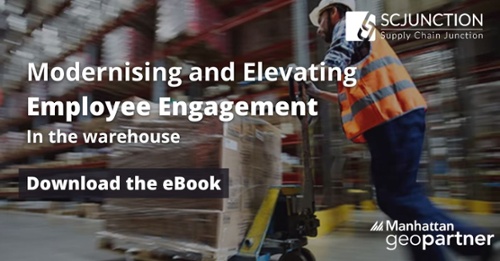Covid, the supply chain and human nature

Covid isn’t over. It won’t disappear either. Its impact today depends on where you are in the world. But in broad terms, how has it changed the global supply chain? What changes have occurred in response to it? And of those changes, what's going to stick? Will we remember everything we’ve learned? Will the defences remain? Or will they weather over time?
The rolling impactThe initial effect was to slow down production activity. Quarantines and lock downs kept production workers idle.
As production stalled, inventories ran down. Supplier’s limited inventories of finished goods and materials weren’t replenished.
At the same time, rising uncertainty led to panic buying. Visions of empty shelves in one part of the world spiked, spreading to other parts of the world. People might not have been Covid positive, but they were beginning to suffer from it. Consumer demand spiked driving inventories down faster, resulting in more empty shelves. More orders followed. They amplified their way back up the supply chain. The bullwhip effect was in full flight. The orders that made it to the end of the production line then hit the next hurdle - transportation.
Production needs transport. As production started to recover, the transportation it needed faltered. Air Freight capacity shrank with airline fleet groundings. Shipping container availability shrank. Supply and demand struggled to meet. Shipping rates soared. Available shipping then diverted to the most profitable routes. What freight did arrive then had to find road transport. It was suffering problems of its own.
What responses gained favour across global supply chains?
1) More Inventory
Depending on your industry, an extra dollar of sales might send 30c to the bottom line. But a dollar cut from inventory is a full dollar that goes straight to the bottom line. Over time, this easy source of profit put increasing pressure on inventory levels. Over time, inventory became evil.
Covid exposed the fragile state of low inventory levels in global supply chains. To avoid these shocks, companies are now willing to invest in inventory. In a short space of time, inventory became insurance.
2) More, smaller regional DC’s and use of 3PL’s closer to the customer.
More inventory requires more warehousing. One of the issues raised by Covid has been the fragile state of transportation. There’s no point in investing in more inventory if it's stranded.
The response is smaller, regional distribution centres. Locating closer to customers provide a shorter lead time. It also gives the flexibility to serve the final consumer. And where you can’t justify a regional warehouse of your own, 3PL’s can meet this need. With the rise of omnichannel retailing, this flexibility is non-negotiable. Consumers don’t demand it anymore, they now expect it. But smaller, more frequent final consumer orders need a different response. Systems and processes designed to meet the traditional, large customer demand don't work.
3) More automation
Coping better against inevitable future shocks requires more inventory across smaller warehouses. This requires effort to maintain real time inventory visibility. Extra inventory will come at a cost, so pressure will be on effort minus the cost. This is where automation is now making its mark. Automated storage and retrieval systems, and real time visibility through WMS systems. Both will be critical to avoiding future shocks.
What ‘will stick’?
- More inventory.
- Smaller, regional warehouses and 3PL's.
- Better systems to manage both.
These combined will see global supply chains cope with tomorrow’s shocks. Inventory investment is the fastest method to insure against future shocks. It’s faster and cheaper than building new factories.
New warehouse capacity or 3PL arrangements are not as fast but are cheaper. They'll provide flexibility in the positioning of your inventory insurance.
Either way, automation and greater visibility through critical WMS infrastructure is essential.
It will be hard to argue for a reduction in flexibility. Pulling inventory away from consumers into fewer, larger warehouses will reduce cost. It will not increase service. The new network will stick.
The new network will only heighten the need for a greater focus on inventory management.
Warehouse automation coupled with visibility via solid systems and processes will remain critical. To pull back on it will reduce cost, not increase service. Better systems will stick. History serves as a sound guide for the future of inventory levels. It's not hard to reason that inventory will again become evil. Today’s sound reasoning for more will not withstand tomorrow’s sound reasoning for less. More inventory won’t stick. Profit will prevail.
…after all, it’s human nature.
A WMS that employs cutting-edge warehouse technology, you will position your company at the forefront of change, aligning it with global industry leaders. Contact us to learn how we can help you reduce warehouse costs and help you increase your service levels.
TAGS
- WMS (50)
- Warehouse Best Practice (46)
- Implementing a WMS (29)
- Managing your warehouse (19)
- Omni Channel (18)
- eCommerce (18)
- Blog (16)
- Supply Chain Best Practice (16)
- Mid-Level (8)
- Customer Journey (7)
- Warehouse optimisation (7)
- General Tips (5)
- Industry General (5)
- Information (5)
- managing your Supply Chain (5)
- saudi arabia (5)
- Trends (4)
- smart warehouse (4)
- 3PL (3)
- News (3)
- ERP (2)
- Entry-level (2)
- ROI (2)
- Case Study (1)
- OMS (1)
- Picking (1)
- Press Release (1)
- Solution-Specific (1)
- Transport Management System (1)
Take A Look At The Results Of A Successful WMS Implementation.
See how Tarsus Distribution, in collaboration with SCJ boost overall efficiency by 60%




